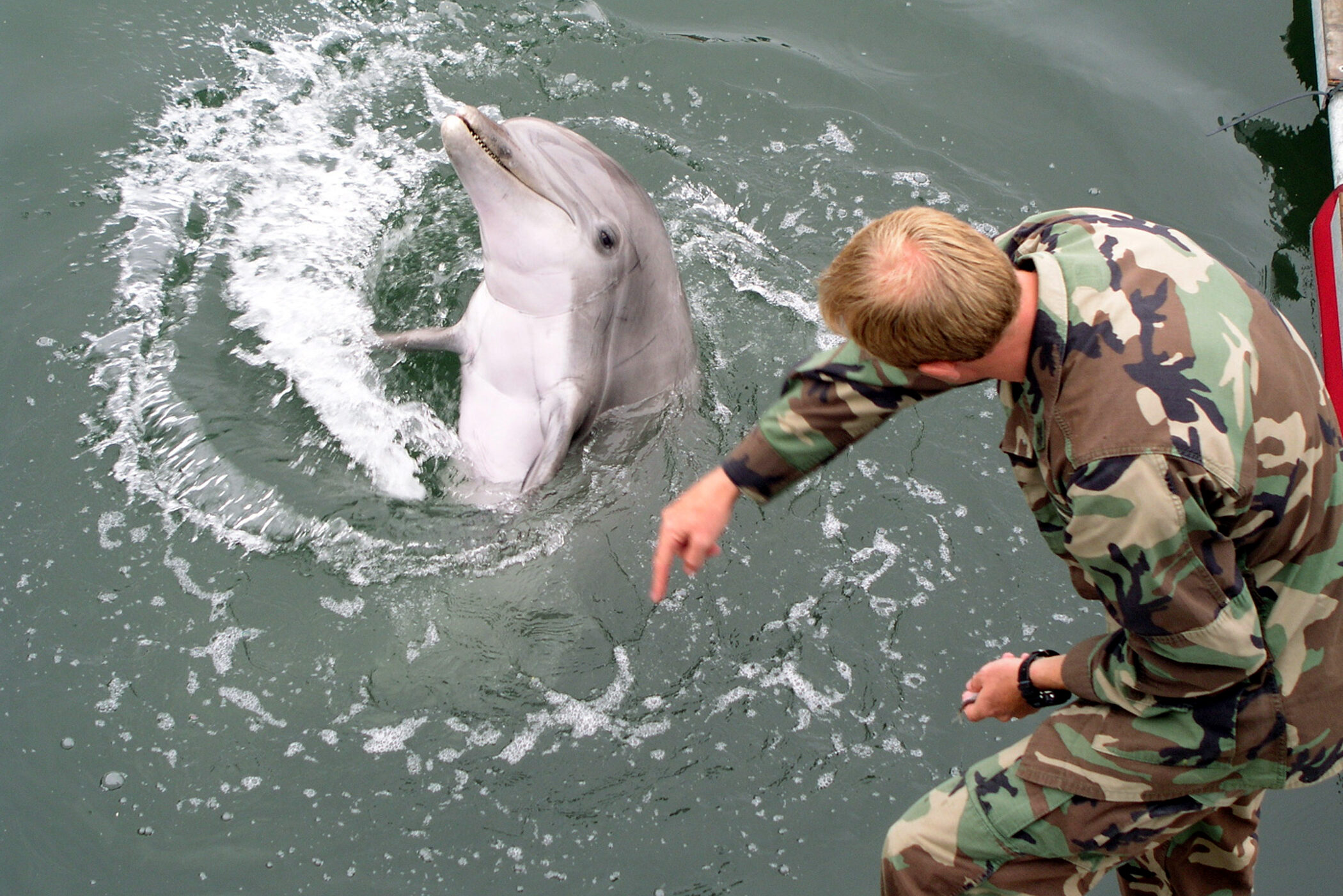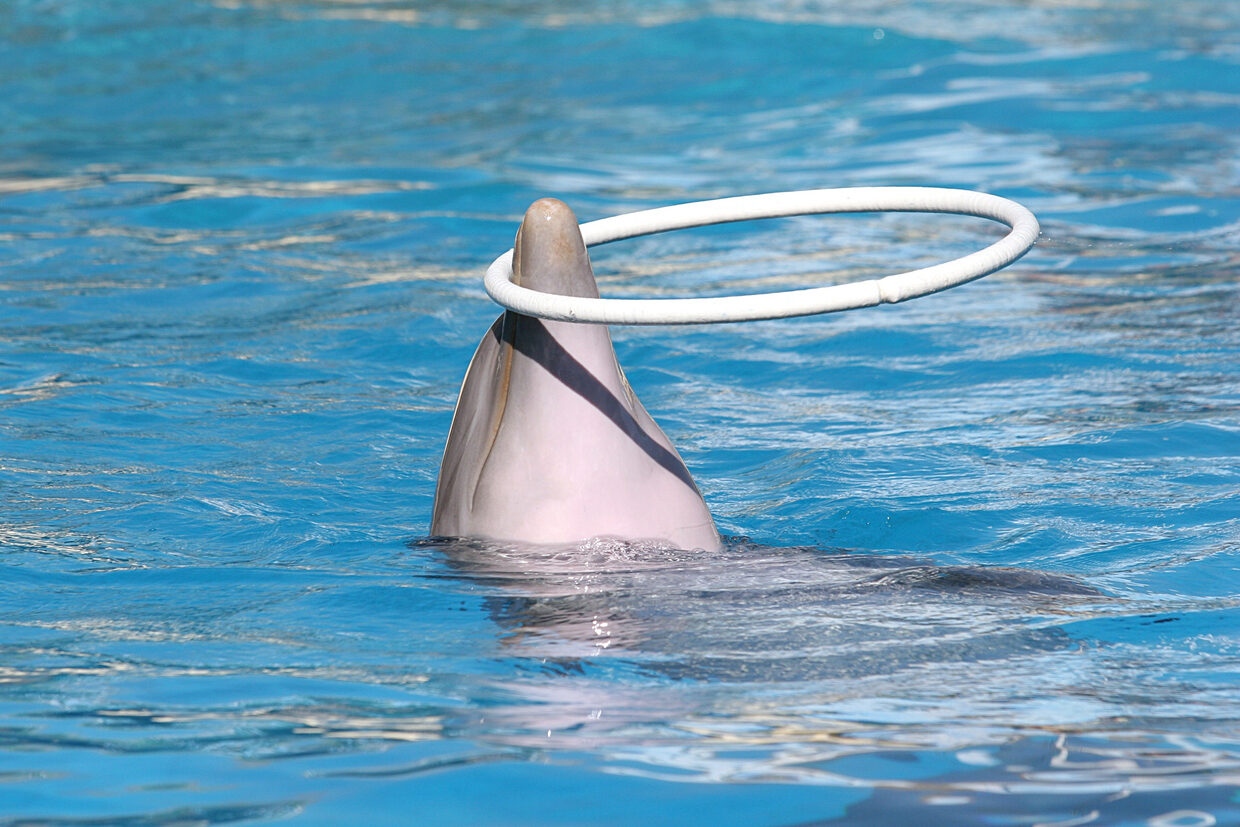The Cold War’s Wettest Secret Weapon

Picture the 1960s: bell bottoms, Beatlemania… and dolphins secretly joining the military. No joke. As the Cold War raged on, the U.S. Navy launched a top-secret program called the U.S. Navy Marine Mammal Program. Its stars? Bottlenose dolphins with radar-like sonar that put high-tech gadgets to shame. The goal? Outsmart enemy submarines and mines with something faster, quieter, and, well, cuter. These dolphins were trained to detect underwater mines, attach markers to suspicious objects, and even patrol restricted zones like little aquatic guards. With their sleek bodies and built-in echolocation, they could do laps around traditional tech. They weren’t just fast—they were brilliant, capable of processing acoustic information quicker than the Navy’s best sonar systems.
And while Soviet spies were busy decoding paperwork, our dolphins were literally diving into national security. The kicker? Some of these dolphins could perform tasks better than robots—like distinguishing between friend and foe just by the sound of propellers. Over time, their skillset expanded to include object recovery and even identifying buried mines in muddy seabeds. These weren’t circus animals—they were tactical assets swimming silently under the surface, writing their own chapter in naval warfare. But if you think underwater mine-hunting was impressive, things only get weirder from here…
The Dolphins Who Guarded Nuclear Weapons

Yes, this actually happened. In the 1980s, a group of dolphins was stationed at the Bangor Naval Submarine Base in Washington State, home to one of America’s largest nuclear arsenals. Their mission? Keep enemy divers and saboteurs very far away from those nukes. The dolphins were trained to patrol underwater perimeters and either alert handlers or—brace yourself—attach restraint devices to intruders with their snouts. Imagine being a spy, sneaking into a base at midnight, only to be tackled underwater by an angry dolphin. It sounds like a Looney Tunes episode written by Tom Clancy. But the dolphins were scarily efficient, operating in total silence and using sonar to track targets in pitch-black water.
Some reports even claimed they could distinguish between divers just by the sound of their breathing. They worked 24/7 in shifts, rain or shine, silently sweeping for signs of intruders in the deep. It wasn’t just security—it was strategy, adding a layer of living surveillance tech to the Navy’s playbook. So while the rest of the world fretted about missile launches, these dolphins were out there protecting nukes with Olympic-level precision. And speaking of protecting precious assets, let’s swim over to the Gulf War, where dolphins were deployed once again—this time, on a battlefield far from home.
Operation Desert Flipper

In 2003, as U.S. forces prepared to enter the chaos of the Iraq War, the Navy called in a very specialized unit: Mark 6 Marine Mammal Systems—aka dolphins trained for war. These weren’t showbiz dolphins performing flips for fish. They were battlefield veterans, flown into the Persian Gulf to help clear the waters of deadly mines before troops could land. The dolphins would scout ahead, marking suspicious mines with floating buoys while staying clear of danger themselves. And they did it faster and more accurately than any piece of equipment on hand. Reports say they helped clear over 100 mines in a single deployment, possibly saving countless lives. Some dolphins even received transport in military helicopters, complete with customized stretchers and splash pools.
Troops gave them nicknames—like K-Dog—and shared stories about their uncanny intelligence and loyalty. It was one of the most public uses of dolphins in combat, and it left the world both amazed and slightly uneasy. With cameras rolling and news outlets buzzing, these dolphin operatives became global sensations, blurring the line between science fiction and battlefield reality. Their presence proved that nature still had tricks up its sleeve in modern warfare. Because if dolphins were that good at military ops, what else were they being trained to do?
Spy Games and the Soviet Dolphin Program

Not to be outdone, the Soviet Union had its own elite team of dolphin operatives. In the 1960s, they established a secret base in Sevastopol, Crimea—complete with training pools, high-security labs, and, you guessed it, dolphins in military bootcamp. These dolphins were trained to attack enemy divers with nose-mounted knives and to carry explosives to enemy ships. It sounds utterly bonkers—but declassified reports and former handlers confirmed it. The USSR even explored strapping cameras to dolphins for underwater surveillance. They reportedly experimented with attaching lethal tools to the dolphins, turning them into potential underwater assassins. These weren’t just experiments—they were Cold War weapons swimming under the radar.
After the Soviet Union collapsed, there was genuine concern over what would happen to the trained dolphins. Some were reportedly sold to Iran. Others may have been relocated. It became a mystery wrapped in flippers and murky Cold War history. Rumors swirled about abandoned facilities, secret dolphin trades, and forgotten training manuals gathering dust. And while the U.S. focused on mine-hunting and retrieval, the Soviets leaned into offense—weaponizing their dolphin division in the name of the motherland. And just when you thought dolphin warfare had peaked, enter a bizarre chapter that sounds like something out of Finding Nemo: Black Ops Edition.
The Israeli Dolphin Conspiracy

In 2015, Hamas militants in Gaza claimed to have captured a spy dolphin deployed by Israel. According to their story, the dolphin was fitted with a surveillance camera, weapons, and tracking equipment—and it had been tailing divers off the coast. Was it real? Well, the Israeli military never confirmed it. But marine surveillance is a thing—and dolphins can absolutely be trained to trail swimmers and send intel back to their base. The story exploded online, sparking memes, debates, and raised eyebrows in diplomatic circles. Local news described it as “the most adorable piece of espionage ever accused.”
Whether it was propaganda or a classified experiment gone public, it showed just how possible and plausible aquatic espionage has become. Dolphin espionage might sound absurd—but when trained mammals are already detecting mines and disabling divers, who’s to say surveillance isn’t on the table? Marine mammal programs are notoriously hush-hush, so we may never know the full truth. Still, the idea of stealthy sea creatures spying for nation-states is hard to shake. Spy satellites in space? Old news. Spy dolphins in the sea? Now that’s juicy. But before you dismiss this all as the quirky past of military experimentation, know this: dolphins are still in service. And the next story proves just how relevant they remain.
The Dolphin Veterans of San Diego

Today, if you stroll past a naval facility in San Diego, you might just spot a military dolphin in training. Yep—they’re still at it. Despite advances in underwater drones and robotics, dolphins remain irreplaceable for certain missions. Why? Their sonar is so sensitive they can detect a metal object the size of a golf ball buried under a foot of silt. They’re used for port security, recovery missions, and even ongoing mine detection exercises. Some dolphins are so seasoned, they’re now training the younger recruits—yes, dolphin mentorship is a thing. They work closely with handlers, forming bonds built on trust, routine, and sardine rewards.
Some of these dolphins have careers that span decades, with handlers forming deep, emotional bonds with their aquatic partners. They’re not just tools—they’re teammates. And while they don’t wear medals, they’ve earned their place in military history. There’s even talk of incorporating AI to work alongside them, creating a hybrid dolphin-robot task force. It’s the ultimate fusion of nature and technology, blurring the line between sci-fi and reality. So next time you see a dolphin leaping through the waves, don’t just think of beachside shows and happy chirps. You might just be looking at a seasoned veteran of underwater espionage.


